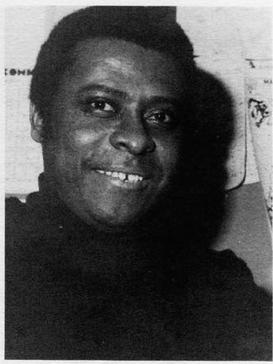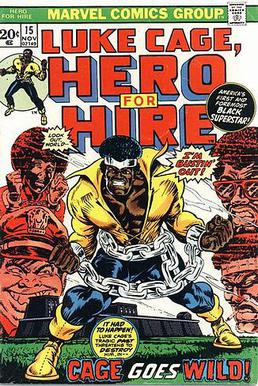Billy Graham (comics) facts for kids
Quick facts for kids Billy Graham |
|
|---|---|
 |
|
| Born | William Henderson Graham July 1, 1935 |
| Died | April 4, 1997 (aged 61) |
| Nationality | American |
| Area(s) | Penciller, Inker, Editor |
|
Notable works
|
Luke Cage, Black Panther |
| Awards | Adelco |
| https://www.facebook.com/ashantiprincessmovie | |
William Henderson Graham (born July 1, 1935, died April 4, 1997) was an amazing African-American comic book artist. He was famous for his work on popular Marvel Comics characters like Luke Cage and Black Panther. Billy Graham helped shape the look and feel of many exciting comic stories.
Contents
Early Days as an Artist
Billy Graham went to the Music & Art High School in New York City. He was inspired by other great artists like Al Williamson, Frank Frazetta, Burne Hogarth, and George Tuska.
One of his first big projects was drawing a story called "Death Boat!" for Vampirella magazine in 1969. This was one of Warren Publishing's popular black-and-white horror-comics magazines. Billy Graham often drew and inked his own stories for Vampirella. He also worked on another magazine called Creepy.
A publisher named James Warren once joked about hiring Billy Graham. A reporter asked him about hiring an African-American art director, which was rare back then. Warren pretended to be surprised and said, "Is Billy black? I didn't know that. Get him in here! Billy, are you black? You're fired!" This shows how unique it was to have an African-American art director at the time.
Working with Marvel Comics
Billy Graham eventually joined Marvel Comics. He became part of the team that started the Luke Cage, Hero for Hire series. He helped draw the very first issue in 1972. He either inked or drew almost every issue of Luke Cage under its first title. He also worked on the first issue when it was renamed Luke Cage, Power Man.
One reviewer said that Billy Graham's art got better and better over time. They noted his early work looked a bit rough, but his later issues were "clean and beautifully detailed."
Steve Englehart, who wrote many Luke Cage comics, said that Billy Graham helped him plan the stories. He felt it was a team effort. Billy Graham is even credited as a co-writer for some issues.
Black Panther Adventures
Billy Graham also worked with writer Don McGregor on the popular "Black Panther" series. This series appeared in Jungle Action magazine from 1973 to 1976. Billy Graham became the main artist for the series.
Many people loved his art for Black Panther. An inker named Bob Almond even dedicated his work to Billy Graham. A writer named Buzz Maverik said that Billy Graham's art made Black Panther feel like a "grown man" of the Marvel Universe. He felt that Graham's art, even more than the writing, made the character special. In 2010, Comics Bulletin ranked McGregor and Graham's work on Jungle Action as one of the top Marvel comics of the 1970s.
Other Comic Work
Billy Graham also drew for other comic books. He illustrated issues of Sabre in the 1980s. This series was a spin-off from one of the first graphic novels. He also drew stories for Marvel's horror magazines like Monsters Unleashed. He even wrote and drew a six-page story called "The Hitchhiker" in Eclipse Magazine.
His last comic book work was co-drawing Power Man and Iron Fist in 1985. This was the same Luke Cage series, but with a new title.
Beyond Comics
Billy Graham also appeared as an extra in TV commercials. He was in ads for things like beer and chewing gum. He also played an artist in a movie based on the Detectives Inc. graphic novels. Besides his art, Billy Graham wrote several plays. He even won awards for his work designing sets for plays.


